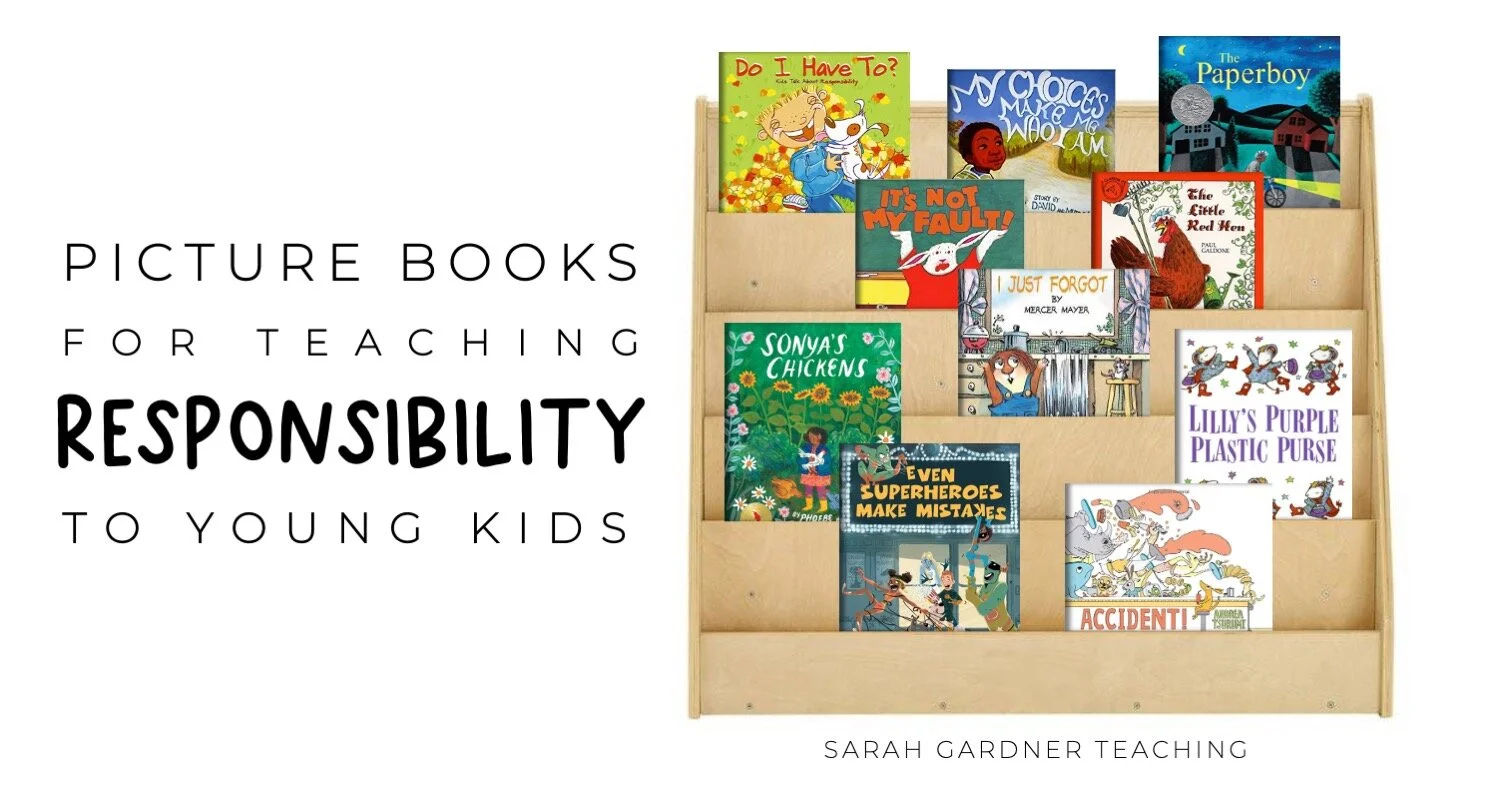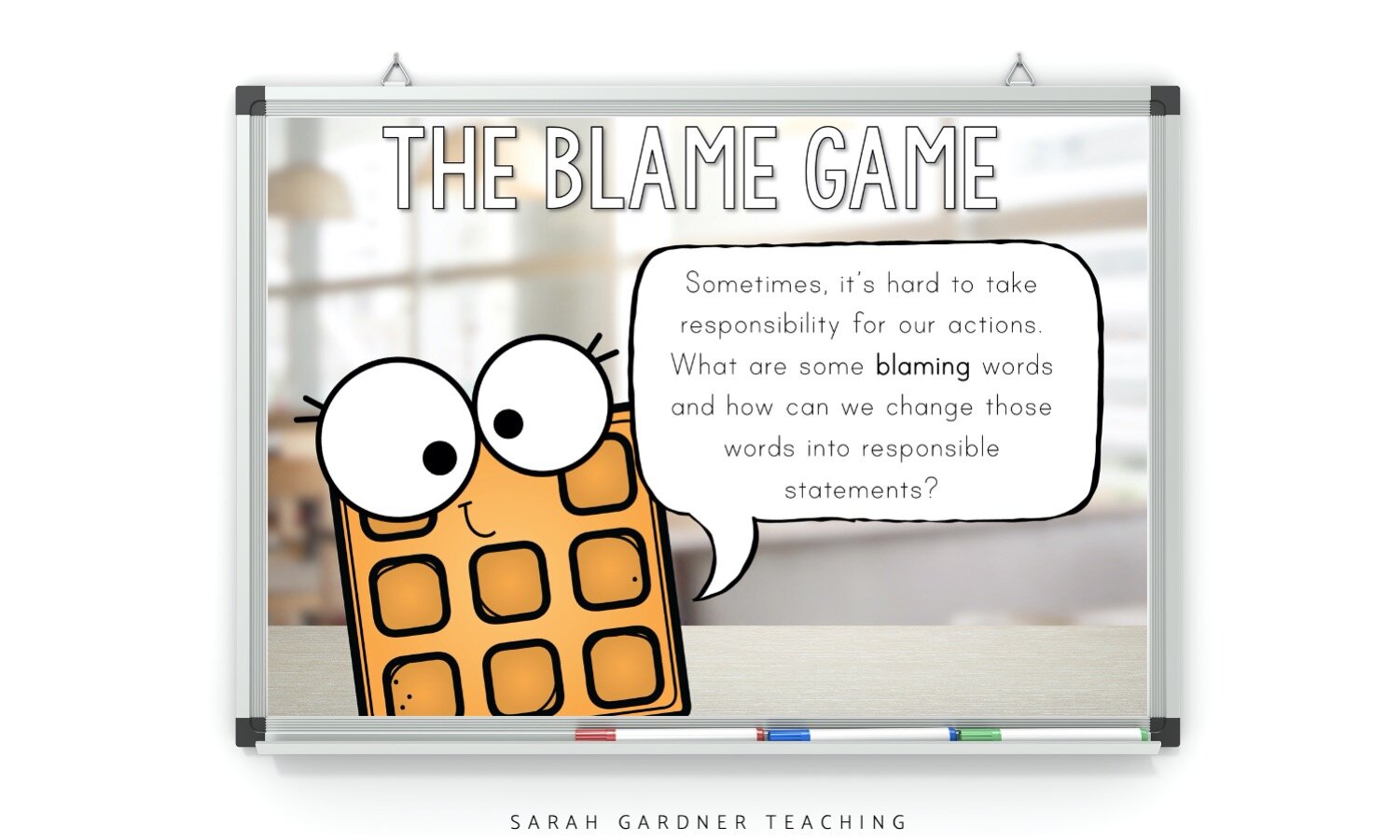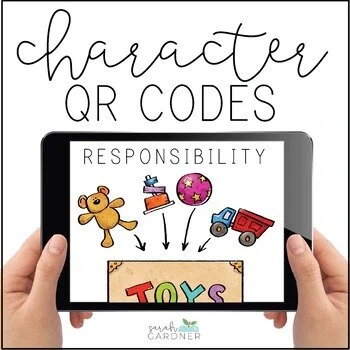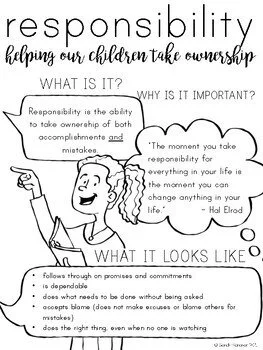Cultivate Responsible Kids: My Top 10 Books for Teaching Responsibility to Kids
We want our students to be responsible - not just because it makes our lives as teachers easier, although, that is undeniably true. Our desire to cultivate responsibility in our students extends far beyond the classroom or even the current school year. Teachers want their kiddos to be as successful as possible and to grow up to contribute in a meaningful way to their communities.
There are so many facets to the concept of responsibility: taking responsibility for one’s actions, completing the tasks we need to do, and acknowledging that there are things that we are expected to do. I found this article that I think you might like. It really breaks down the parts and pieces of responsibility in an easy-to-digest way.
Have you ever considered why students’ attitudes vary when it comes to having responsibilities? I found this article on the relationship between the Enneagram types and responsibility so intriguing. Our students are individuals and will all respond to having responsibilities differently. Some students will view responsibilities with an all-or-nothing mentality. Some will try to avoid tasks they need to do at all costs. Undoubtedly, certain kids might feel the need to patrol others to ensure they are adhering to their responsibilities. We may not know their Enneagram numbers, but we know our students, which might help us show empathy when they aren’t as responsible as we would like them to be.
The books listed below illustrate responsibility in fun and thoughtful ways. The stories vary from taking accountability for one’s actions, to contributing to a household, and completing duties even when you don’t feel like it. The selections will all make for fun storytimes while still teaching valuable lessons about responsibility.
Please note that this post contains affiliate links, meaning, at no additional cost to you, I will earn a small commission if you click through and make a purchase.
BOOKS FOR TEACHING RESPONSIBILITY TO KIDS
Lily’s Purple Plastic Purse by Kevin Henkes
Lily loves her teacher, Mr. Slinger, so much that it inspires her to want to be a teacher. That bond is threatened when Lily brings her Hollywood sunglasses, shiny quarters, and a new purple plastic purse. Mr. Slinger asks her not to make them a distraction, but when she can’t resist, the teacher takes her accessories away. Lily is so outraged that she no longer wants to be a teacher, and she even draws a mean picture of Mr. Slinger. He returns Lily’s items and she finds a note he put in her purse stating, “Today was a difficult day. Tomorrow will be better.” Lily is guilty and ashamed. She makes a new story and picture, asking for forgiveness. This book is appropriate for teaching responsibility any time students are allowed to have anything new or special in the classroom, such as show and tell items. I also love sharing this book with children because it shows examples of non-traditional gender roles-- for example, Mr. Slinger as an elementary school teacher and Lily’s father baking cookies.
It’s Not My Fault by Nancy Carlson
This hilarious story starts with George getting called to the principal’s office. Before the principal can say a word, George is making excuses for all the mistakes he made that day, such as being late for school and not completing his math assignment. He blames everything that happened on outside forces or other people. When he finally stops rambling, the principal explains that that is not why he called him in but proceeds to assign consequences to make him take responsibility for his actions. This book is light-hearted and will break the ice for a classroom discussion on times we’ve blamed others for our actions or mistakes and why that’s not an effective strategy in the long run.
The Little Red Hen by Paul Galdone
I love this classic tale for teaching responsibility to littles! This story is about a hen, cat, dog, and mouse that all live together. Hen is always busy doing chores such as planting and cutting wheat, taking it to the mill, and making food. At the beginning of every new task, Hen asks the others if they will help, but they always refuse. They learn their lesson the hard way when Hen makes a delicious smelling cake, and they all came running for a slice. Hen decides to keep the cake all for herself since the others didn’t contribute. Cat, Dog, and Mouse all learned their lesson and began to help with the chores. You can relate this story to running a classroom and how it takes everyone’s help to make it run smoothly. If you assign class jobs, you can discuss how no one job is more important than the others.
Do I Have to?: Kids Talk About Responsibility by Nancy Loewen
The author of this book tackled the topic of responsibility in such a creative way. Kids write in about their struggles with homework, friends, and rules, and Tina Truly provides sensible suggestions in her column. Sometimes children can be overwhelmed by their problems, so I like the idea of providing concrete solutions that will help them conquer their struggles. Asking the students to write their own column offering advice on a responsibility-related topic could be a fun extension to accompany this read-aloud.
My Choices Make Me Who I Am by David and Mutiya Vision
Of all of the books I read about responsibility, this has got to be my favorite. It is uplifting, helpful, and progressive. The boy in this story models the various aspects of responsibility and the thought process behind it. It’s important to teach kids that even if responsibility is more natural to some than others, that we are all capable due to our growth mindsets. The story also discusses how we control our emotions and behavior, even if it doesn’t always feel like it. The author also delves into reputation slightly and describes it as, “the report card of your life.” Responsibility and reputation go hand-in-hand, so that would be a valuable discussion to have. Finally, the boy in the story ends with a plan of action to be as responsible as he can. What a great way to show kids that we have to be intentional about our actions, and sometimes that means writing down our game plan and sticking to it.
Accident by Andrea Tsurumi
This story begins with Lola spilling a red drink all over a white chair and responding by deciding to go hide in the library until she is an adult. On the way to the library, she comes across many others who have had accidents too. They all decide to join Lola on the journey to her hiding spot. Ultimately, she discovers that running away from her problems isn’t the best solution. Avoiding and running away is relatable even to adults, huh?. It seems like an easy solution sometimes. However, our character is portrayed in how we respond to our mistakes. We will have to face it eventually, so we might as well do that from the beginning-- even if it’s difficult.
The Paperboy by Dav Pilkey
The Paperboy is the story of a boy waking up before everyone else and completing his paper route. The reader gets to experience the boy’s routine and sees how it’s not always glamorous. This book shows the importance of following through with commitments, even when it doesn’t seem fun or you don’t feel like it.
I Just Forgot by Mercer Mayer
I have always adored the Little Critters books, and this one is no exception. The little critter in this book remembers to do some things like brushing his teeth and putting his cereal bowl in the sink. However, he forgot to do some tasks like making his bed and putting the milk away. I like this book because it shows that responsibility is rarely all or nothing, which is important to share with our students, especially our perfectionists. Responsibility is about trying to do the right thing, but we are still humans and will make mistakes. When this happens, kids need to know that they can give themselves grace!
Even Superheroes Make Mistakes by Shelley Becker
Have you ever had someone, either in your real life or a celebrity, that you put on a pedestal and assume they are perfect? When something happens that proves that not to be the case, it can be earth-shattering, but it can offer a sense of relief. Deep down, we know that nobody is perfect, but that can be hard to remember sometimes! The same is true for kids. This adorable book uses rhyming to show that even superheroes make mistakes! When they do make mistakes, they don’t make excuses, blame others, or hide. Superheroes know that they still have important tasks in front of them. Of course, they may feel embarrassed, guilty, or regretful, but they choose not to wallow in those feelings. They get back on the horse and get back to work. That’s what responsibility is!
Sonya’s Chickens by Phoebe Wahl
This book is awesome for teaching responsibility with pets. Sonya’s grandfather gives her three chicks, and they soon become her babies. She takes care of them, even though it takes a lot of work. One night a fox gets through a hole in the chicken coop and kills one of the chickens. Sonya is devastated, but her dad makes her feel better by explaining that the fox has a family in the woods and he was just being a good dad by bringing them food. The explanation makes her feel better, they fix the hole in the coop, and she continues to care for her chickens. Kids love talking about their pets, and this is a great book to initiate the conversation of the responsibility of taking care of animals. If you have a class pet, the discussion will be that much more meaningful. Additionally, you could sneak in some science standards by integrating topics such as ecosystems and the circle of life.
MORE RESOURCES FOR TEACHING RESPONSIBILITY
I also love to use QR codes to reinforce a topic when I’m short on time. Hang the codes around the room and whenever students have an extra minute or two, they can grab their device, scan a code, and watch the video all about responsibility. These are great for keeping early finishers busy in a meaningful way, too!
RESPONSIBILITY PARENT LETTER
I’ve found that parents want to help their child develop their social-emotional skills, but they just don’t know how! These parent letters are a quick and easy way to communicate with your parents about what your students are learning, and gives them tips and tricks for helping to develop responsibility at home, too!






















